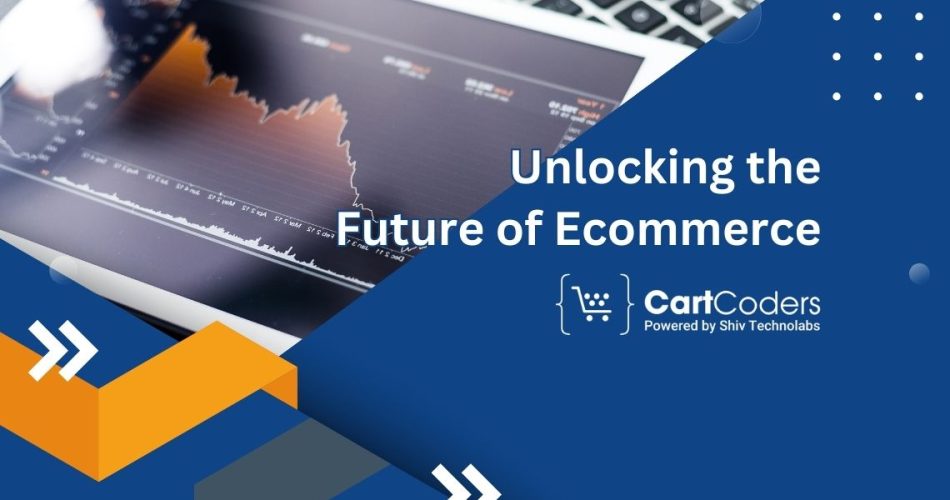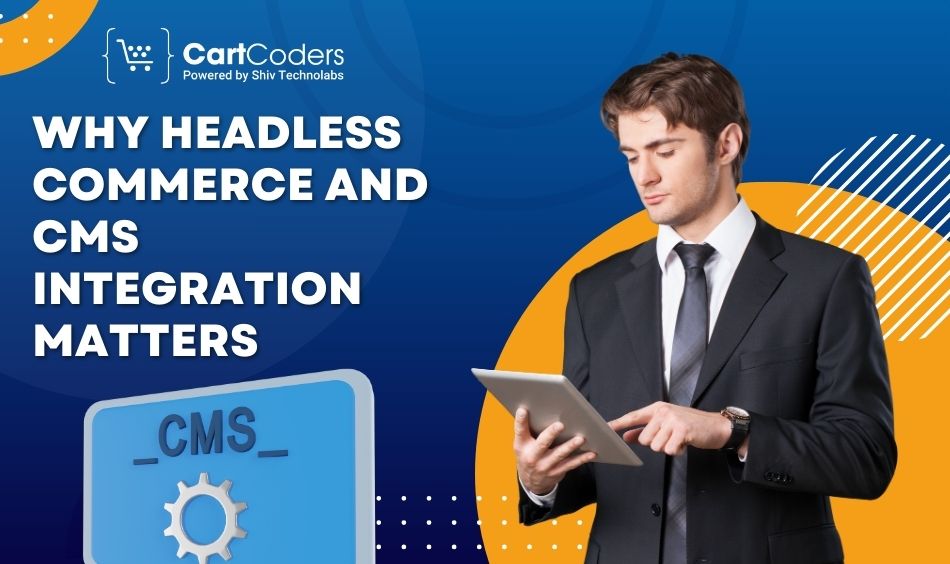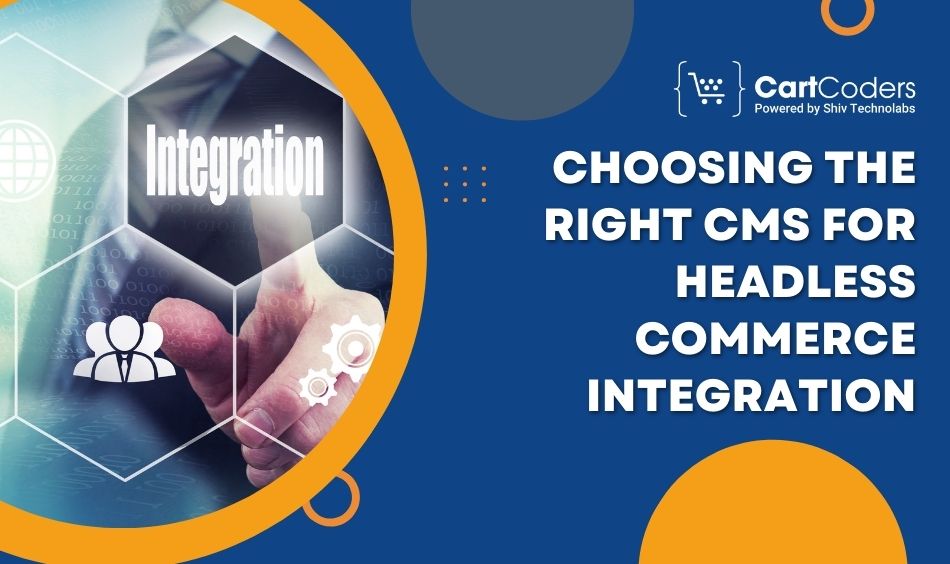Custom Engagement Solutions
Unlock tailored solutions with a free, no-obligation strategy session.
Expert Developers & Engineers on Demand
Scale Your Team with Skilled IT Professionals
Expert Guidance for Digital Transformation

In today’s advanced digital economy, brand management requires speed, responsiveness, and versatility to serve customers. This is where headless commerce is beginning to appear as a robust solution that decouples the frontend customer experience from the backend commerce operations.
This decoupled approach makes it more creative to achieve the objectives and provides a quick response to changes. When combined with a Content Management System, also known as CMS, headless commerce makes it easy for brands to deliver more engaging and personalized experiences.
Let’s take a closer look at the advantages of using CMS in combination with headless commerce, how this can radically change e-commerce, and why you may need to turn to Shopify headless commerce developers from CartCode to achieve all this.

Previous generation e-commerce applications couple the front end with the back end, making it easier to create specialized interfaces with significant backend programming effort. But with headless, while leveraging a CMS for content delivery across all channels, your e-commerce platform can concentrate on selling and handling the stock. This structure offers several advantages:
● Enhanced Flexibility and Creativity: Headless commerce breaks the built-in template chain that lets brands develop and provide customized and appealing experiences on multiple devices.
● Speed and Scalability: Frontend and backend functionalities are distinct here, which means that it is possible to scale each side individually to ensure the front end is as fast as possible. In contrast, the back end handles as many requests as possible when your brand continues to expand.
● Personalization and Omnichannel Experiences: Such integration also makes it easy for brands to feed and deliver content optimally through an omnichannel approach with mobile, web, and social media touchpoints.
● Improved SEO and Performance: A flexible front end also means that your site can be set up to load faster and rank higher in search engines because the front end can be separated from the more complex backend systems.
That is why companies that want to achieve both – create effective integrated solutions and leverage the full potential of headless commerce platforms- need to hire talented and knowledgeable unified headless commerce specialists.
Integrating a CMS with a headless commerce setup can unlock significant benefits. Let’s dive into some of the most valuable aspects of this powerful combination:
CMS is an effective tool for controlling content like articles, blog posts, descriptions of products, services, and landing pages. This means that while working with headless commerce, the CMS must also be capable of resolving the content delivery to other front ends and guarantee that every customer touchpoint is proper and harmonizes with the brand perspective.
For instance, Shopify’s headless commerce setup makes it easy to work with common CMS platforms, including Contentful, WordPress, and Sanity, where the firms simplify the delivery of customized content in various touchpoints.
Thus, with the help of headless commerce development services from experienced providers like CartCode, brands can entrust this integration to the maximum level of effectiveness.
In a traditional e-commerce system, updating the front and back end can take time and effort, especially if you need changes on multiple platforms or devices. With headless commerce, frontend teams can implement updates quickly without altering the back end, while the CMS enables efficient content updates.
This decoupled system allows brands to get new content to market faster when launching new products or seasonal campaigns. Leveraging headless commerce development services helps ensure a smooth workflow, enabling you to meet tight deadlines without sacrificing quality.
With headless commerce platforms, the CMS layer can be integrated to provide superior levels of personalization. For instance, information product recommendations, advertisements, or content relating to a particular customer can be served to separate customer groups.
Chief digital officers and headless commerce experts are potent tools that open up opportunities to develop individual experiences and engage each customer differently, following their actions. Information that customers receive – products selected by a brand that reflects their taste – increases the possibility of customers’ engagement and consequent purchases.
When managing data across multiple channels, security is a top concern. Integrating a CMS with a headless commerce system offers enhanced control over data privacy, ensuring that the front end operates separately from sensitive transaction information on the back end.
Additionally, with the right headless commerce development services from CartCoders, businesses can enhance their security protocols by implementing CMS and API-based data exchange solutions that reduce the likelihood of unauthorized access.

Not all CMS platforms are suitable for headless commerce. Here are some of the most popular CMS options compatible with Shopify’s headless architecture:
1. Contentful: Being a headless CMS, Contentful integrates perfectly with Shopify; brands can use it to manage content across various platforms successfully.
2. WordPress: WordPress seamlessly works with Shopify through plugins such as WPGraphQL and WooCommerce-Shopify API, so it is doubled as an e-commerce platform and the most powerful blogging platform.
3. Sanity: While this headless CMS is not equipped with a content editor, it boasts seamless real-time cooperation and content management, which makes a brand speedy and flexible.
Speaking with headless commerce experts should give an understanding as to which CMS is suitable for your business.
Here’s an overview of the critical steps involved in integrating a CMS with a headless commerce system:
Working closely with a headless commerce development services provider like CartCode, the first step involves creating a comprehensive strategy. This strategy should define which content will be managed by the CMS and how it will be delivered to the front end.
CMS and headless commerce platforms need APIs to facilitate interoperability and enable the two systems to work together. Professional developers establish APIs linking Shopify with CMS to ensure the content is continuously broadcast across the channels.
A headless system allows the creation of a separate frontend tent that reflects the company’s brand. This stage is often considered an appropriate time to design and create unique templates that correspond to the brand’s mission statement and the target audience’s needs.
Once the CMS and headless commerce setup are live, extensive testing is conducted to ensure smooth operation across different channels. This phase includes performance testing, load testing, and mobile optimization to ensure customers enjoy a seamless experience.
While the benefits are substantial, integrating a CMS with headless commerce can present challenges. Here are some common issues and how headless commerce experts address them:
● Complex Development Process: While headless, more configurations are needed for it to function, and expecting to accomplish this by assembling ordinary developers is a disservice to the system.
● Higher Maintenance Costs: In case of integration failure, where the frontend and backend applications are separated into different systems and they get connected through the backend, it is expensive to maintain. With the help of CartCode, businesses are guaranteed they have the proper setup to minimize these unending expenses.
● API Limitations: Not all APIs provide seamless communication between the CMS and the headless platform. CartCode’s headless commerce development services include custom API solutions to bridge gaps.
As a seasoned provider of headless commerce development services, CartCode specializes in helping businesses integrate CMS platforms with headless commerce solutions like Shopify. Here’s how CartCode can assist:
● Tailored Solutions: CartCode offers personalized development solutions, ensuring your CMS and e-commerce platform work together seamlessly.
● Experienced Developers: When you get headless commerce developers from CartCode, you are exposed to developers who know how to integrate API, customize the front end, and manage content.
● Ongoing Support: CartCode also offers a post-launch for headless commerce optimization and troubleshooting to help your setup be effective.
Thus, using CartCode services, you can improve content management and customer satisfaction and achieve higher levels of performance for your e-commerce company that corresponds to the vitriolic tempo of the evolving digital world.
Brands get the agility, flexibility, and personalized attention they need when a headless commerce system is implemented with a CMS. Jewelry brands must consider investing in headless commerce development services from a provider such as CartCode and instantly upgrade their digital storefronts to a high-performing tool.
To move your e-commerce platform to the next level, contact CartCode and hire headless commerce specialists to help you integrate this functionality effectively.
Headless commerce replaces the frontend with the backend system of order processing and thus provides more choices in the presentation of content to the audience. Combining it with a CMS allows you to disseminate relevant and personalized content to different channels without effort.
Not all CMS platforms work seamlessly with headless commerce systems. Commonly compatible options include Contentful, WordPress, and Sanity. Consulting with headless commerce experts can help you select the best choice.
With this integration, it becomes possible for brands to enhance their experiences and satisfaction if they send out content across different channels, spaces, and times, making it easier and more fulfilling for the users.
Shopify headless commerce developers are familiar with enhancing and implementing headless integrations so that you can get the most efficient results for your business.
Projects delivered in 15+ industries.
95% retention rate, building lasting partnerships.
Serving clients across 25+ countries.
60+ pros | 10+ years of experience.